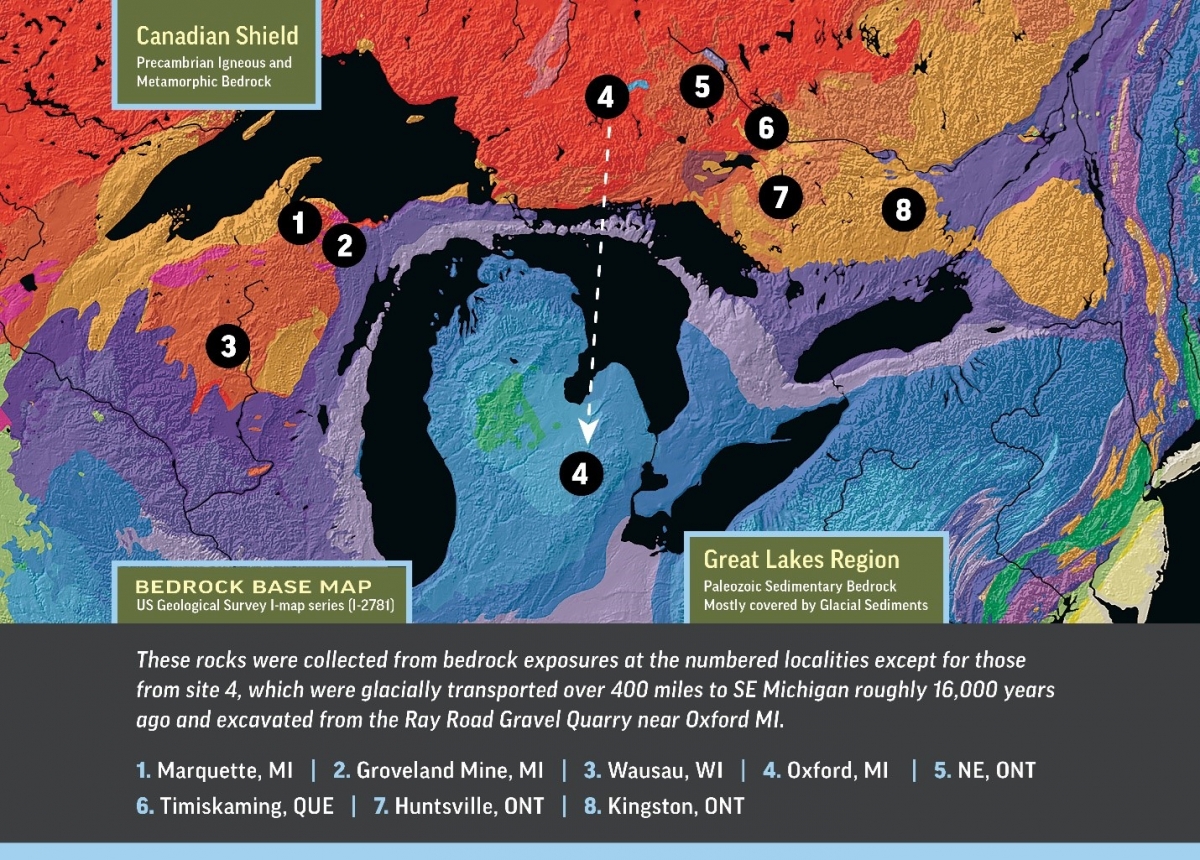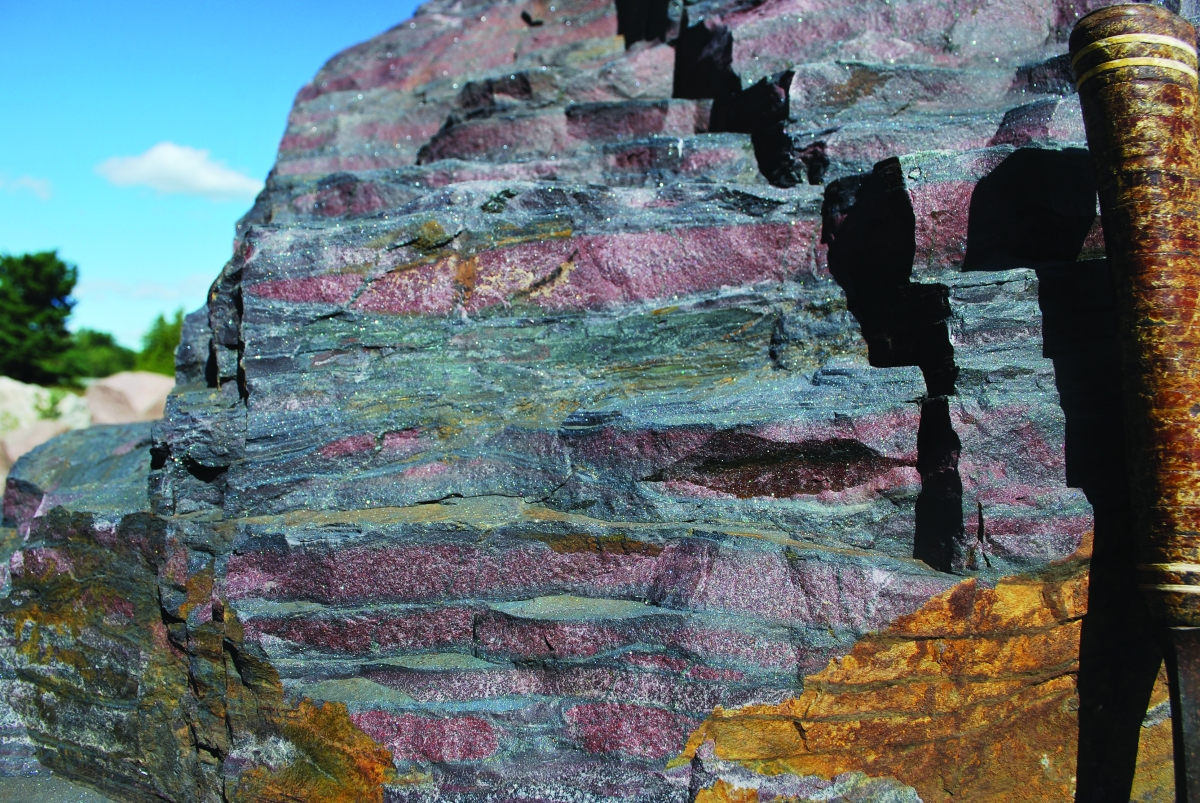Bedrock Base Map Location 2
 Banded iron formations consist of alternating layers of iron-rich silver to black iron oxides (magnetite or hematite) and red layers of iron-poor chert known as jasper.
Banded iron formations consist of alternating layers of iron-rich silver to black iron oxides (magnetite or hematite) and red layers of iron-poor chert known as jasper.
Billions of years ago, Earth’s atmosphere and oceans were very different from today, most notably in that they lacked oxygen. Approximately 2.4 billion years ago Earth experienced a rise in oxygen levels in an event known as the Great Oxidation Event. Evidence points to this uptick in oxygen originating from microscopic ocean-dwelling organisms called cyanobacteria which carried out oxygen-generating photosynthesis. Dissolved iron in Earth’s oceans would react with this oxygen to produce iron oxides (the silver to black layers) which would settle onto the ocean floor. The alternating layers of iron-rich and iron-poor rock are thought to be the result of seasonal variations in oxygen production.
Billions of years later, banded iron formations are prized as the world’s primary source of iron ore. Iron ore mined from banded iron formations here in Michigan was used to make the steel ships, tanks, trucks, artillery, and guns used in World War I and II. Today, Michigan’s iron ore deposits are nearly depleted, and Western Australia is the world’s major source of iron ore.

Groveland Mine, western Upper Peninsula, Michigan | Paleoproterozoic | 1.8 billion years old
